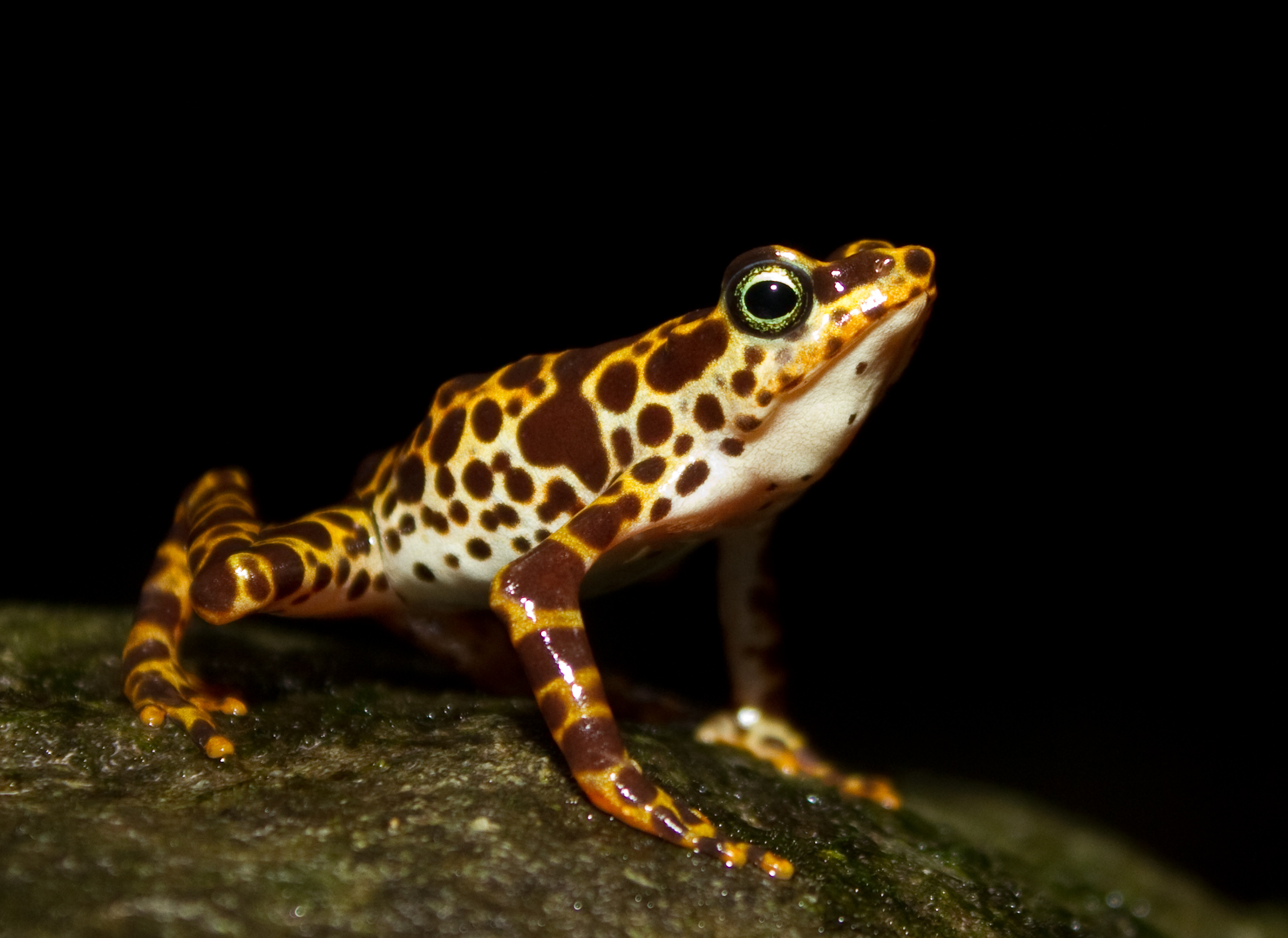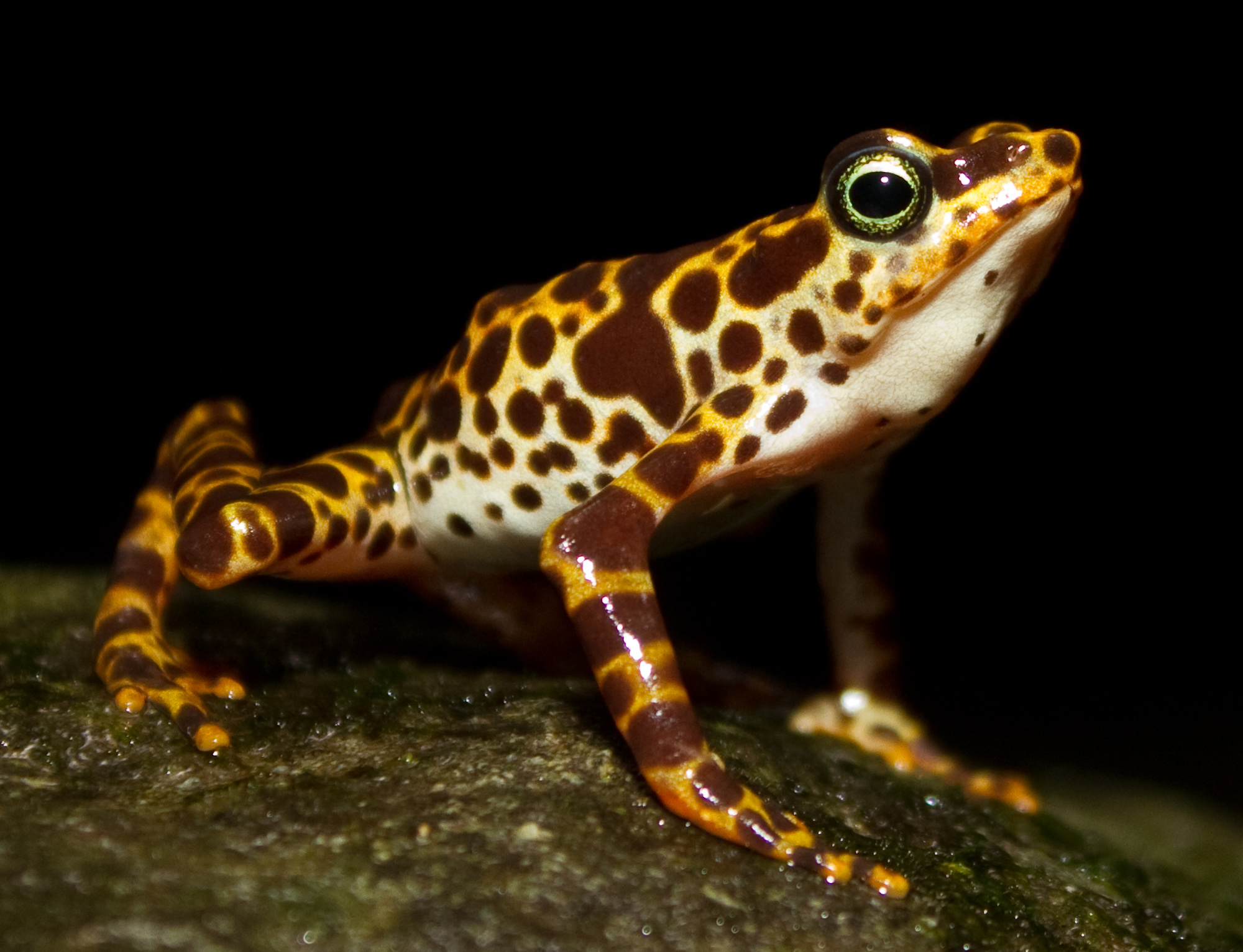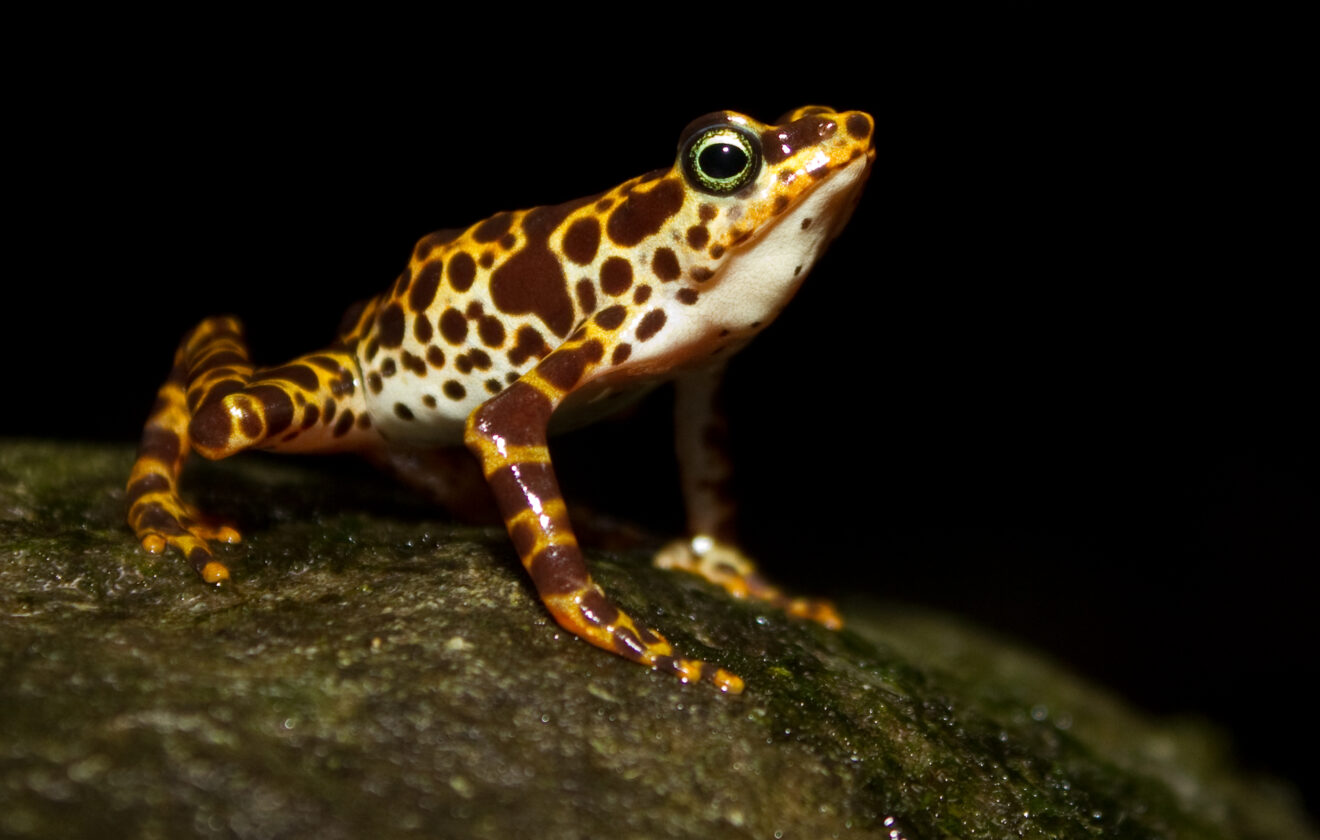- Introduction: The Vibrant Jewel of Panama's Forests
- Taxonomy and Classification: Placing the Jewel in the Amphibian Tree
- The Natural Habitat: Journeying into Its Forest Sanctuary
- Physical Characteristics: Nature's Artistic Masterpiece
- Behavior and Life Cycle: An Amphibious Drama Unfolding
- Ecological Role: A Keystone of Balance and Health
- Threats and Conservation Status: A Jewel in Jeopardy
- Cultural and Scientific Significance: Beyond the Biological Realm
- Conclusion: Preserving a Jewel of Panama's Biodiversity
Introduction: The Vibrant Jewel of Panama’s Forests#
In the lush, mist-draped forests of eastern Panama, hidden among emerald foliage and meandering streams, dwells an amphibian steeped in both scientific curiosity and natural splendor—the Panamanian Harlequin Frog, scientifically known as Atelopus certus. Adorned in vibrant hues and bold patterns reminiscent of a harlequin’s vivid attire, this enigmatic amphibian has deeply fascinated scientists, conservationists, and nature enthusiasts alike.
Yet beneath its striking coloration lies a startling tale of survival, struggle, and resilience—a narrative underscored by alarming declines and resolute conservation actions. Before we journey deeper into the life and times of Atelopus certus, consider this peculiar fact: despite its small stature, the presence or absence of this frog is oftentimes a revealing reflection of the overall health of its ecosystem.
Taxonomy and Classification: Placing the Jewel in the Amphibian Tree#
Scientifically categorized within the Bufonidae family under the genus Atelopus, the Panamanian Harlequin Frog’s taxonomy reveals intriguing evolutionary connections. As a member of the genus Atelopus, known commonly as Harlequin frogs, A. certus stands among an incredibly charismatic yet critically vulnerable group, many of which have faced dramatic declines across Central and South America.
This colorful frog garnered its specific epithet, certus, from its distinctive markings that appear precise and consistent—’certus’ meaning ‘certain’ or ‘determined’ in Latin, subtly alluding to its unmistakable appearance. Closely related species, such as Atelopus zeteki, better known as the Panamanian golden frog, share its plight, making the entire genus a high priority for amphibian conservationists worldwide.
The Natural Habitat: Journeying into Its Forest Sanctuary#
Geographic Range and Environment#
To find Atelopus certus in its exquisite natural dwelling, one must venture into the humid tropical forests of eastern Panama, particularly within the Darién province. Here, dense greenery conceals an intricate network of streams and rivers—a wet haven perfectly tailored to the frog’s life cycle. Remote and often difficult to access, the Darién forests provide a semblance of sanctuary from human encroachment, although habitat pressures continually threaten this delicate refuge.
Habitat Preferences and Microhabitats#
This remarkable frog prefers swift-running streams and associated rocky environments—a preference closely linked to their highly specialized lifecycle. During active periods, the Panamanian Harlequin Frog can be seen navigating stream banks, sheltered beneath dense foliage, or basking briefly upon moss-covered rocks. The deeply interconnected relationship between water bodies and damp forest leaf-litter habitats not only offers shelter and food but also spaces vital for reproduction, egg deposition, and larval development.
The Darién rainforest provides precisely these habitat conditions—an environment abundant in resources yet fragile in its equilibrium, underscoring the delicate balance required for such specialized species to thrive.
Physical Characteristics: Nature’s Artistic Masterpiece#
When one first gazes upon Atelopus certus, the immediate allure lies within its bold patterns and striking colors. A small to medium-sized frog, adults typically measure between 3 to 4 centimeters in length. Their slender, angular bodies display remarkable color heterogeneity—vibrant patterns blending yellows, greens, oranges, blacks, and occasionally bright reds.
No two individuals are exact replicas, each one adorned uniquely, with distinct patterns functioning as nature’s subtle fingerprints. These intense warning colorations, known scientifically as “aposematic,” function as powerful visual signals to predators, hinting at the frog’s inherent toxicity. The bright, contrasting colors are purposeful adaptations—precise testimonies of evolution sculpting organisms toward survival.
Physically, they possess elongated limbs designed for swift, agile movements required for life among slippery stones and fluid waters. Furthermore, the frogs’ smooth, toxin-secreting skin acts as both defensive armor against potential predators and a vulnerable point of exposure to environmental changes.
Behavior and Life Cycle: An Amphibious Drama Unfolding#
Feeding Habits and Hunting Techniques#
Like most amphibians, A. certus primarily feeds on a diverse array of insects, arthropods, and other small invertebrates abundant in their habitat. Patient ambush predators, they rely on stealth and sudden lunging motions, expertly wielding sticky tongues to capture their unsuspecting prey. Observing their feeding routines provides glimpses of evolutionary finesse shaped by generations of forest camouflage and predatory prowess.
Breeding Rituals and Reproductive Wonders#
Within quiet forest streams, a unique reproductive drama unfolds annually—an event carefully choreographed by the seasonal rhythms of rainfall and temperature fluctuations. During mating season, males energetically vocalize through short, chirping calls to attract females. Competing males engage in tactile competitions, wrestling gently for prime breeding positions in streams.
Once paired, females deposit numerous gelatinous egg masses on submerged rocks or amid vegetation within streams. Significantly, their tadpoles are strongly adapted to swiftly flowing water environments, equipped with specialized mouthparts enabling them to cling firmly to wet substrates— a crucial adaptation that protects them from predation and displacement.
The metamorphosis from aquatic tadpole to fully terrestrial froglet marks an inspiring transformation—a pivotal change that demands pristine water conditions and abundant nourishment, reinforcing importance of habitat quality preservation.
Ecological Role: A Keystone of Balance and Health#
The Panamanian Harlequin Frog serves crucial functions within its rainforest home. As an effective insect predator, A. certus participates actively in controlling invertebrate populations, thus maintaining ecological balance. Conversely, in the larger food web, the frog represents a valuable prey species, nourishing various predators including birds, reptiles, snakes, and mammals.
Additionally, amphibians like A. certus are highly sensitive bioindicators, their presence or absence providing essential clues regarding ecosystem health. Fluctuating populations often alert scientists to changes such as pollution, habitat degradation, or climate impacts—acting as nature’s sentinels long before human observation recognizes environmental distress.
Threats and Conservation Status: A Jewel in Jeopardy#
Declining Populations and Causes of Concern#
Unfortunately, as with many amphibian species worldwide, Atelopus certus faces stark threats. Rapid habitat loss due to agriculture, deforestation, and infrastructure development continues to encroach upon their remaining safe havens. Yet, increasingly grim phenomena have plagued this species: the deadly amphibian chytrid fungus (Batrachochytrium dendrobatidis), climate fluctuations altering rainfall patterns, and pollution further degrading habitat quality.
These factors, collectively, have driven an alarming population decline. Atelopus certus is officially categorized as “Critically Endangered” by the International Union for Conservation of Nature (IUCN).
Conservation Actions and Hopeful Prospects#
Numerous conservation and recovery programs have been initiated, targeting improved habitat protection, scientific research, and potential captive breeding programs. Collaborative efforts, involving multinational teams across academic institutions, zoological parks, and indigenous communities, vigorously aim to reverse the species’ trajectory from imminent extinction toward stable recovery.
Cultural and Scientific Significance: Beyond the Biological Realm#
Culturally, frogs often hold symbolic meanings within indigenous cultures—representing elements of fertility, transformation, and renewal. Moreover, the study of harlequin frogs has provided significant scientific insights into toxicity, healthcare research, and environmental changes.
Research examining Atelopus toxins has medical implications, contributing toward understanding pain management and neurological research. Similarly, their sensitivity to climate variations makes them invaluable sentinel species, alerting scientists toward broader environmental indicators linked closely to global ecological health.
Conclusion: Preserving a Jewel of Panama’s Biodiversity#
The stunning Panamanian Harlequin Frog symbolizes nature’s captivating beauty, incredible adaptability, yet alarming vulnerability. Each additional threat emphasizes an urgent plea to conserve not only this vibrantly colored amphibian but the very habitat upon which countless other species equally depend.
As conservation advocates, nature lovers, and stewards of biodiversity, it remains our collective responsibility to champion the survival of remarkable species like Atelopus certus. Your interest and support help empower crucial conservation actions—ensuring future generations too can marvel amidst the vibrant harlequin frogs, streaming gently through the lush-green veins of Panama’s living forests.















